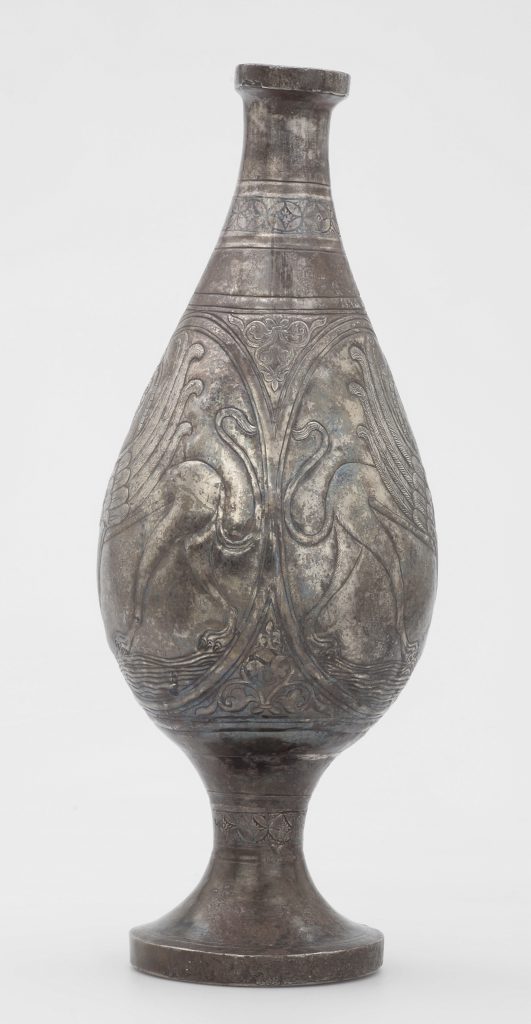



Title: Tall Ewer
Date: 7th or early 8th century AD
Location: Iran or western Asia
Materials: silver, beaten and worked in relief, with linear engraving enhanced by niello and traces of gilding
Dimensions: 38.5cm (height)
Accession Number: MTW 455
Other Notes:
The central oval medallion depicts a two-headed eagle, flanked by oval medallions with advancing gryphons. The choice of monsters and workmanship are typical of Sasanian art on the frontiers of the Iranian world, perhaps ancient Tokharistan, the area south of the Oxus River, in the east. However, the heraldic poses of the eagle and gryphons may suggest a workshop to the west of Iran, in Syria or possibly even in Constantinople.
Bibliography:
J.M. Rogers, The Arts of Islam. Masterpieces from the Khalili Collection, London 2010, cat.15, p.40.
Zoom
Close

Create your own collection of artworks that you can print or save as a PDF. Please enter you email to enable feature.
Small Flask | JLY 1075
Has been added to your collection.
TIP:
You can now access and view your collection from the main menu at any time.